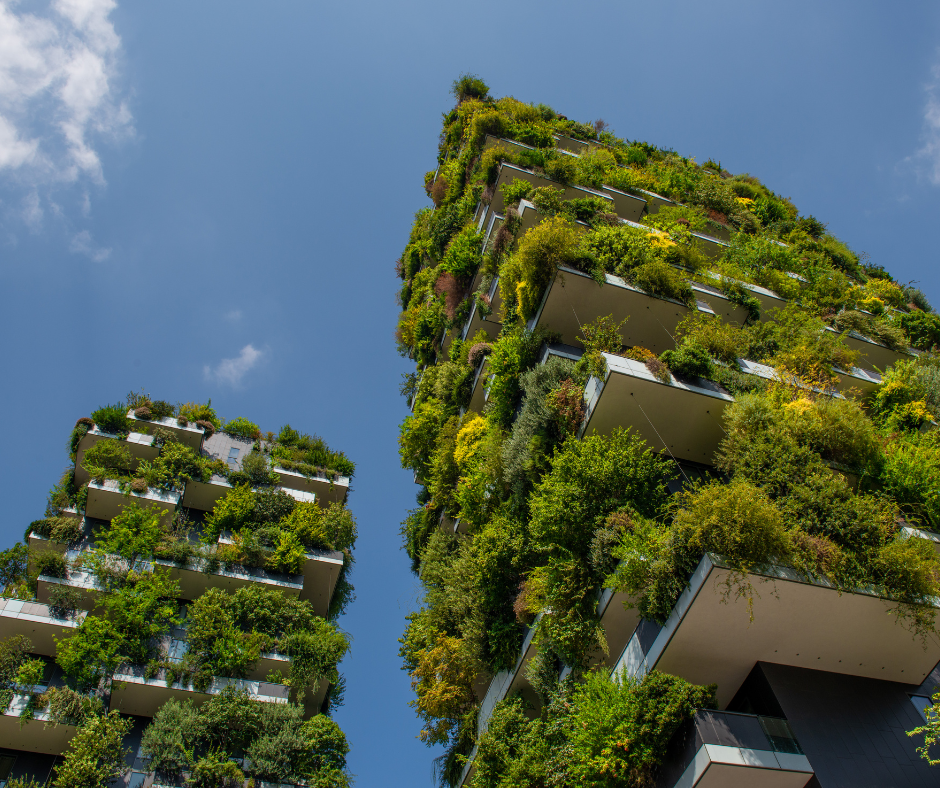In a world increasingly aware of the importance of sustainability, sustainable building, or green building, represents a challenge and an opportunity to create healthier, more efficient and harmonious environments for future generations.
- Sustainable construction and the European Council agreement
- Green building
- Examples of green building in the world
Sustainable construction and the European Council agreement
Compared to sustainable building, traditional construction has a significant impact on the environment, both in terms of consumption of natural resources and greenhouse gas emissions. In Italy, according to ENEA, the energy consumption of buildings constitutes a significant part of the total energy used. Specifically, they account for 40 per cent of total consumption, and of this percentage, as much as 70 per cent concerns residential buildings.
The sources of energy consumption are mainly air conditioning, the use of electrical appliances and lighting. Improper use of electrical appliances can result in considerable energy waste, such as leaving appliances on standby or using them in an inefficiently.
Precisely in order to limit climate-changing emissions, on 7 December 2023, the European Union reached a historic agreement on the proposed revision of the Energy Performance of Buildings Directive. This agreement, also known as ‘Ready for 55%‘, represents a significant step towards a more sustainable future. The main goal is for all new buildings to be zero-emission by 2030 and existing buildings to be zero-emission by 2050.
The agreement includes the deployment of suitable solar energy systems in new buildings, public buildings and existing non-residential buildings undergoing renovation. Fossil fuel boilers will be phased out and gradually replaced with more sustainable solutions.
It is a concrete commitment towards the EU’s goal of achieving climate neutrality by 2050.
But how then to design urbanisation that takes into account climate change, impacts and the needs of those who live in these places every day?
Green building
Green building is a discipline that deals with the design and construction of sustainable buildings that respect the environment and the health of the people who live in them, taking into account the lifestyles of the users, seeking to satisfy their needs for comfort, safety, energy saving and aesthetic quality.
This method of construction is based on the use of natural or recycled materials, the reduction of environmental impact, the valorisation of local resources, integration with the context and landscape and the participation of inhabitants in the design process.
Sustainable construction offers a number of significant benefits for the environment, society and the building owners themselves, such as:
- Improved indoor air quality through advanced ventilation systems and low-toxic materials; this improves air quality within living spaces and promotes occupant health.
- Reducing resource waste by promoting responsible use, with recycled materials, certified timber and rainwater harvesting systems helping to reduce waste.
- These buildings are designed to better withstand extreme weather events such as floods, earthquakes and storms, protecting occupants and minimising material damage.
Among the many advantages of green building, there is also the cooling of cities in hot summers through the use of green roofs, reflective surfaces and natural ventilation systems.
The certifications ensure respect for the environment during the construction of buildings. Among these, LEED, the most widespread globally, evaluates energy efficiency, the use of sustainable materials and ecological practices. ANAB identifies building products with low environmental impact, while Natureplus promotes principles of human and environmentally-friendly construction.
Examples of green building in the world
All over the world, various architectural structures highlight the possibility of combining design and sustainability.
La Shanghai Tower in China is not only the second tallest skyscraper in the world, at 128 storeys and 632 metres high, it is also an environmentally sustainable building that uses recycled materials and features wind turbines to cover its energy needs.
The Edge in Amsterdam, the Netherlands, is considered the most sustainable office in the world, self-producing energy through solar panels andrainwater harvesting systems, using environmentally friendly materials and maximising natural lighting.
The Bosco Verticale in Milan, designed by Stefano Boeri and opened in 2014, is one of the most innovative skyscrapers in the world. Thanks to the use of an Xlam wood structure, it achieves energy savings of up to 90%, and is home to a vast amount of plants and trees that contribute to air purification and thermal insulation.
La Fiorita Passive House in Cesena is a residential building, built in 2016, is the first multi-apartment building in Italy to obtain the Passivhouse. It uses an Xlam wood structure and achieves energy savings of up to 90% thanks to thermal insulation.
K19b in Milan, designed by LPzR Architetti Associati, is located in the historic centre of Milan; K19b, a seven-storey residential ‘Near zero Energy Building’, clad in larch wood and Friuli stone, blends in perfectly with the surrounding historic buildings.
These examples demonstrate that sustainability can be effectively integrated into architecture, contributing to a greener and more environmentally friendly future.
Sustainable construction is therefore an opportunity for the environment and for society, which can enjoy more liveable, comfortable, safe and energy-efficient spaces.
Play for the planet!
